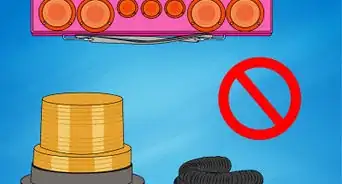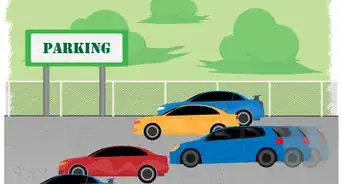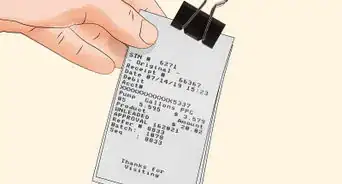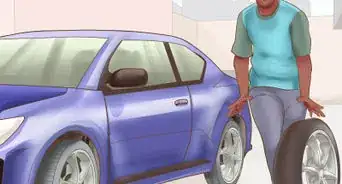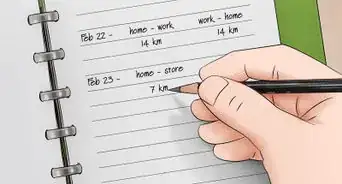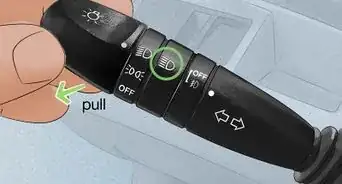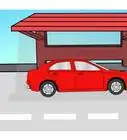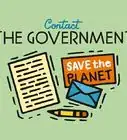This article was co-authored by Ed Beery. Ed Beery is an Automotive Specialist and the Owner of InTechgrity Automotive Excellence based in Denver, Colorado. With more than eight years of experience, he specializes in providing maintenance and repair services for both individuals and companies. Ed and the InTechgrity Automotive Excellence Team are approved by the American Automobile Association (AAA) for repairs and are Automotive Service Excellence (ASE) certified.
There are 16 references cited in this article, which can be found at the bottom of the page.
wikiHow marks an article as reader-approved once it receives enough positive feedback. This article received 19 testimonials and 100% of readers who voted found it helpful, earning it our reader-approved status.
This article has been viewed 1,173,330 times.
As gas prices continue to climb, increasing the fuel mileage is the best way to protect your pocket book. Here are a few ways to spend less money on gas by increasing your car's efficiency in using it.
Steps
The car
-
1Set the car tires to the proper inflation. Properly inflated tires can reduce fuel consumption by up to 3%.[1] Your tires also lose about 1 PSI per month, and when the tires are cold (e.g., in the winter),[2] their pressure will decrease due to the thermal contraction of the air. It is recommended to check tires at least monthly, preferably weekly. Having properly inflated tires will also help you avoid uneven wear on the tread.[3]
- Some fuel stations have automatic air compressors that stop at a predetermined level. (For safety, double-check pressure with your own gauge, especially if another is suggesting you add a surprisingly large amount of air.)
- Small permanently-installed valve-stem extensions can allow filling without removing the caps, but check that they are not prone to jamming with foreign matter and leaking.
- Recommended inflation pressures are for cold tires; it is best to inflate first thing in the morning or you've driven less than two miles so your reading will be accurate. If you have been driving around for a while or it is hot outside, add 3 PSI. Inflate to the pressure recommended by your car's manual or the sticker on your driver-side doorpost. Be aware that the reading stamped on the tire is the maximum tire pressure, not the recommended.
-
2Tune up the engine. A properly tuned engine maximizes power and can greatly enhance fuel efficiency. Beware, though, that many tuners will disable efficiency measures when tuning for power.Advertisement
-
3Check the condition of your engine air filter. A dirty filter will reduce fuel economy, or make the engine stall when idling. Just like mowing dusty grass, driving dusty dirt roads will clog the air filter: avoid dust clouds.
-
4Replace the fuel filter according to the car manufacturer's recommended schedule. This will go a long way to enhancing fuel efficiency.
-
5Lighten your load.[7] Get the lightest car that will serve your needs. Weight is one of the biggest causes for loss of kinetic energy in non-hybrid cars. If you're not shopping for cars, then take any extra weight off of the one you're already driving. If seats that you don't use can be removed, take them out. If you use your trunk as a storage space for heavy things, find another place for them. An extra 100 pounds increases fuel consumption by 1–2%. (Weight is most important in stop-and-go driving. In almost exclusively highway driving, it matters little: once the car is up to speed, it need only push air out of the way.) Don't remove things from the car that you need frequently; instead, make sure these are in the car and readily accessible because wasted trips to retrieve or replace them will be much worse than a little lower mileage.
-
6Select the narrowest possible tires for your vehicle that will satisfy your driving style and demands.[8] Narrow tires have less frontal area, thus reducing aerodynamic drag. Remember, however, that narrow tires have less traction as well (which is why race cars have such wide tires). Do not get a tire that is incompatible with your wheels (use the size tires that came stock on the vehicle), and do not get smaller wheels unless your manufacturer approves.
-
7Select low-rolling-resistance compound tires. These can increase fuel economy by a few percent. However, the difference is not startling or a substitute for proper inflation. It would be wasteful to replace the former tires with these before they are worn out.
-
8Make sure the oxygen sensors, engine emissions system, and evaporative emissions control systems are in good shape on fuel-injected cars. Often the "check engine light" coming on is an indication that there is a problem with one of these components. A damaged oxygen sensor may cause your car to have too rich of a fuel mixture, decreasing your fuel mileage by 20% or more.
Fuel savings
-
1When you fill up with gas, fill up halfway and try to keep your tank above one quarter full. If your fuel runs low, you could put stress on the fuel pump. However, 10 gallons (37.9 L) of gas adds 60 pounds of weight. A half-full tank may increase your mileage.
-
2Add a synthetic oil additive to either natural or synthetic oil when getting your oil changed.[9] This can increase your gas mileage by up to 15% if you follow the manufacturer's instructions and recommended usage. Be aware that the usefulness of this is questionable: it may be unlikely that synthetic-oil "additive" would cause a car to work much less hard; it would not make the oil overall much less viscous, and circulating the oil is only a relatively small task for a car engine.
-
3Buy quality fuel. No two fuels are the same, and while "discount" brand fuel may save you a few cents per L or Gal, it can contain a higher percentage of ethanol, which burns at a faster rate. Compare the mileage between fuel companies and see what is best for your car.[10]
-
4Try to avoid using the air conditioner in stop-and-go city driving as it causes the engine to work hard and consume more fuel. However, studies show that at highway speeds cars get somewhat better mileage with the AC on and the windows rolled up. The drag caused by rolled down windows at high speed reduces fuel efficiency more than the AC.[11]
-
5If you're trying to find a direct way to control the amount of gas you are using, monitor how hard your engine is working is key. A/C, acceleration, and speed all, of course, affect work but these are not direct indicators. Try monitoring the R.P.M.s (or revolutions per minute) your engine is running at. It's like monitoring your pulse to find out how hard your heart is working You will find that there are RPM ranges which are ideal for your car and others that are not.
- If you find the engine is running at above 3000 R.P.M.s, it's possible you're accelerating at an unnecessarily a low gear. So, ease off the pedal and let the engine build up a higher speed at a lower RPM. he lower average RPM you travel the lower your work and this directly determines your gas mileage.
- How do you monitor your RPM? Most cars have a left gauge next to the speedometer called the tachometer. It measures your RPM at x1000 which means if your gauge indicates halfway between 2 & 3, you're running at 2,500 RPM. A comfort/efficient RPM zone is between 2,000 and 3,000 RPM; however, try to stay below 2,000 as much as possible and not much over 2,700 unless necessary, such as when you are moving uphill through a traffic light from a stopped position. This means you won't get above 40 mph (64 km/h) and you'll achieve 50–55 mph (80–89 km/h) in the city and up to 65 mph (105 km/h) on the highway and still be running at 2,500 RPM. Try to find your comfort/efficient zone and perhaps you can get a few more M.P.G.s by watching how hard your engine is working!
- Be aware that some vehicles are monitored by x100.
Your driving habits
-
1Use cruise control.[12] In most situations, using your cruise control reduces fuel consumption by maintaining a constant speed.
-
2Slow down. The faster you move, the harder your engine has to work to push through the air. Speeding can reduce fuel efficiency by up to 33%. (Factors other than air resistance decrease fuel economy below about 60 mph (97 km/h), so fuel economy is not a reason to go slower, but fuel economy decreases rapidly above that speed).
-
3Accelerate smoothly with moderate throttle. Engines are most efficient with moderately high air flow (throttle) and at revolutions per minute (RPM)s up to their power peak (for small to mid sized engines this is generally somewhere between 4k to 5k RPM). In a manual transmission car, practice 'short shifting', or shifting to higher gears as soon as you reach your desired speed by skipping intermediate gears. For example, accelerate to 40 mph (64 km/h) using 1st gear and 2nd gear, then shift directly to 4th (skipping 3rd), or if your engine can maintain your speed, to 5th. (Be aware that if you have to floor the accelerator pedal in 5th to maintain your speed, you should be in 4th!).[13]
-
4Avoid braking wherever possible. Braking wastes energy from fuel that you have already burned, and accelerating after braking consumes more fuel than driving at a constant speed. On city streets watch ahead and coast when you see a red light or traffic jam ahead.
-
5Avoid excessive idling.[14] Idling a vehicle wastes a significant amount of fuel. The best way to warm up a vehicle is to drive it slowly until it reaches proper operating temperature. However, in very cold weather it is still advisable to let the engine idle for about a minute or two before driving.
-
6Find your car's "sweet speed". Some cars get better mileage at specific speeds, usually 50 mph (80 km/h). Your car's "sweet speed" is the minimum speed at which the car is running in its highest gear (watch for rpm drops as you accelerate to determine when your transmission is shifting into higher gears). For example, most Jeep Cherokees are best at 55 mph (89 km/h), and Toyota 4Runners are best at about 50 mph (80 km/h). Find your vehicle's "sweet speed" and pick your roads accordingly.[15]
-
7Make sure you enable overdrive if your car has an automatic transmission with overdrive, except when towing very heavy trailers. Overdrive is by default enabled on the "D" on most shifters. Several cars have buttons on the shifter which allow you to turn off the overdrive gear. Don't turn it off except in specific circumstances it may be needed such as for engine braking downhill or failure to proceed uphill smoothly in overdrive. Overdrive saves you gas mileage at higher speeds by using a higher gear in the transmission. For example, for every ¾ of a turn of the engine going into the transmission, the output of the trans is one.
-
8Don't circle in a parking lot, and keep well away from the store fronts. Look for a spot in the empty half of the parking lot. Many people spend significant time idling and creeping, waiting for a "close spot" to open up.
-
9Maintain a safe following distance. Don't stick to the bumper of the car directly in front of you. You will brake more and accelerate more to keep that unnecessary and dangerously narrow gap. Relax. Hang back a bit. This also gives you a lot more room to play with when you are timing lights. When the driver ahead of you slams on his brakes, you can coast down and see if the light quick-changes green again (some do). You might even coast by his car as the light turns green and he has to accelerate from a dead stop.
-
10Avoid turning across oncoming traffic. If your route will allow it, try to make as few left turns as possible on the way to your destination (or right turns in countries with left-hand traffic). Stopping and waiting at an intersection to make a turn across the oncoming lane lets the engine run idle, which wastes gas, as does accelerating once again to make the turn.[16]
Planning ahead
-
1Plan your trips.[17] Keep lists of needs that will require a trip and try to accomplish multiple objectives with each. This will not increase your fuel mileage (the number of miles your car moves for each gallon of gas), but it will help you drive less (which, in turn, means you use less gas).
-
2Plan your route carefully. Take the route with the fewest stops and turns and least traffic. Take highways in preference to city streets when possible.
-
3Maintain a log over time of how many miles you go (the main odometer) and how much gas you put in (from the gas pump, including fractions).[18] Put it in a spreadsheet. It will keep you focused, and other methods are inaccurate; you will never know for sure if you're saving fuel, wasting fuel or just seeing errors from gas pumps that stop pumping at different points, or fractions of miles being dropped off your 'trip' odometer when you reset it.
Community Q&A
-
QuestionIf I drive my car 100 km per hour, can I expect good mileage?
 Community AnswerYou can expect a pretty good mileage, although usually the best mileage can be achieved at around 80km/h.
Community AnswerYou can expect a pretty good mileage, although usually the best mileage can be achieved at around 80km/h. -
QuestionIs it possible to get good gas mileage in a Jeep Wrangler?
 Community AnswerYou can get probably about 26 MPG going 45-55 MPH while drafting roughly 50 feet behind a semi-truck and constantly moving. Otherwise, if you are in a city environment or cruise on the freeway at 80 MPH, you'll be lucky to get more than 18 MPG.
Community AnswerYou can get probably about 26 MPG going 45-55 MPH while drafting roughly 50 feet behind a semi-truck and constantly moving. Otherwise, if you are in a city environment or cruise on the freeway at 80 MPH, you'll be lucky to get more than 18 MPG. -
QuestionWhat is the sweet speed of Toyota Avanza auto gear car?
 Community AnswerAs mentioned, while driving what at what speed your RPM is low. The level of RPM at which the speed is more, but RPM is less, is the "Sweet Speed."
Community AnswerAs mentioned, while driving what at what speed your RPM is low. The level of RPM at which the speed is more, but RPM is less, is the "Sweet Speed."
Warnings
- Driving slowly on the highway may be dangerous. It is usually illegal to drive more than 15 mph (24 km/h) below the posted speed limit without having the emergency flashers activated.⧼thumbs_response⧽
- Beware of quack remedies and testimonials about amazing savings. Every magnet and wonder widget that was debunked in the 70's is back again to tempt a new generation.⧼thumbs_response⧽
- Driving close to another car is *always* unsafe; "drafting", more so. Driving close to another car also has legal ramifications. Other dangers include the car in front: suddenly hit the brakes or stop, swerve to avoid something in the road, pass over something in the road that your car does not have enough ground clearance to go over, kick up road debris, have an accident. Always remain at a safe distance from traffic.⧼thumbs_response⧽
- Be careful when using oil additives, some can void a warranty. Read the back of the packaging before use...or consult your vehicles' manufacturer.⧼thumbs_response⧽
- Beware of 'chipping' and other seemingly minor, yet significant vehicle modifications. These will certainly void the warranty, and the wrong one can save fuel and damage expensive engine components for your trouble.⧼thumbs_response⧽
- Usually a 3 second following distance is most effective for maintaining a safe following distance and to avoid road hazards even if they are hidden by the vehicle in front of you.[19]⧼thumbs_response⧽
References
- ↑ https://www.fueleconomy.gov/feg/maintain.jsp
- ↑ https://www.consumerreports.org/cars-why-tires-go-flat-in-cold-weather/
- ↑ https://www.cars.com/articles/2013/06/how-to-check-and-fill-tires/
- ↑ https://www.familyhandyman.com/automotive/car-maintenance/how-to-replace-spark-plugs/
- ↑ https://www.consumerreports.org/car-maintenance/things-to-know-about-oil-changes-for-your-car/
- ↑ https://www.fueleconomy.gov/feg/maintain.jsp
- ↑ https://www.carbibles.com/improve-gas-mileage/
- ↑ https://www.carbibles.com/improve-gas-mileage/
- ↑ https://www.moneycrashers.com/ways-improve-gas-mileage/
- ↑ https://www.consumerreports.org/fuel-economy-efficiency/how-to-get-the-best-fuel-economy-now/
- ↑ https://www.fueleconomy.gov/feg/hotweather.shtml
- ↑ https://www.moneycrashers.com/ways-improve-gas-mileage/
- ↑ https://www.investopedia.com/financial-edge/0211/9-easy-ways-to-increase-your-gas-mileage.aspx
- ↑ https://www.carbibles.com/improve-gas-mileage/
- ↑ https://learn.eartheasy.com/guides/fuel-efficient-driving/
- ↑ https://priceonomics.com/why-ups-trucks-dont-turn-left/
- ↑ https://www.carbibles.com/improve-gas-mileage/
- ↑ https://www.ucsusa.org/clean-vehicles/fuel-efficiency/how-to-maximize-fuel-economy
- ↑ http://www.driversedguru.com/driving-articles/drivers-ed-extras/the-3-second-following-distance-rule/
- https://www.fueleconomy.gov/feg/coldweather.shtml
- A comprehensive list of quantified car modifications
About This Article
To increase fuel mileage on a car, make sure that your tires are properly inflated because that can increase your fuel efficiency by up to 3%. Similarly, make sure to complete regular maintenance on your car since a dirty air filter or old spark plugs will make the engine less efficient. To increase your fuel mileage while driving, try to avoid using the A/C, which burns a lot of gas. You can also increase your fuel economy by using high-quality gasoline, which contains less ethanol and will last longer than the cheap stuff. To learn how to change your driving habits to save fuel, keep reading!








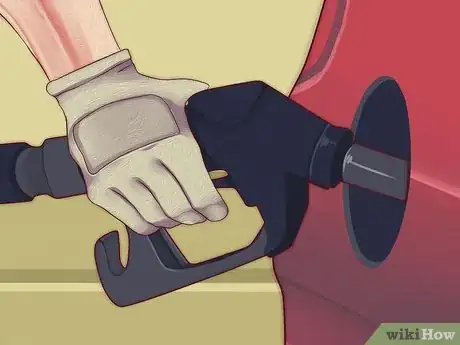
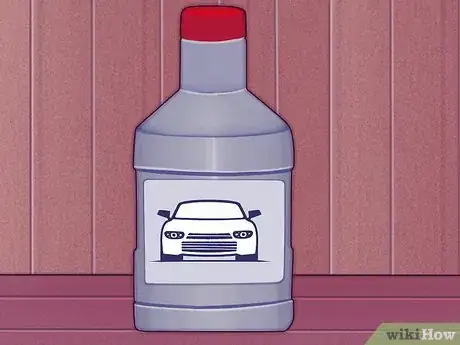




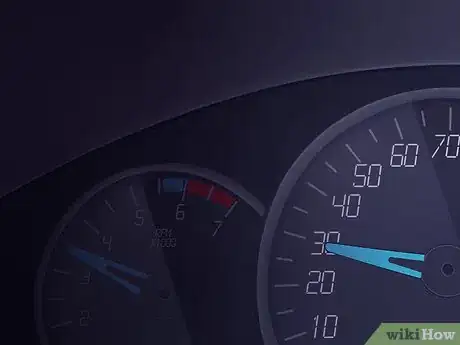



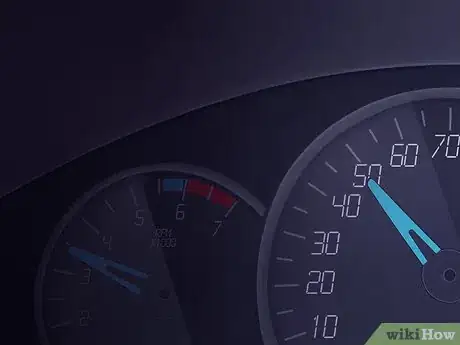



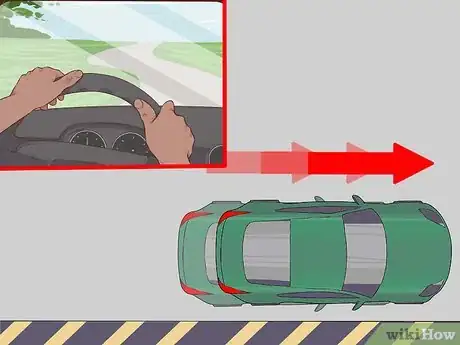




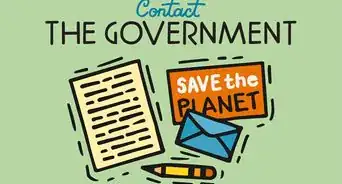

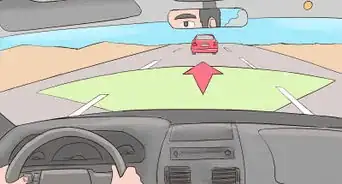

-Step-9-Version-2.webp)
